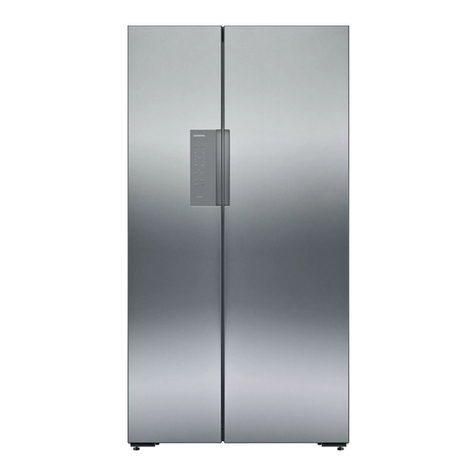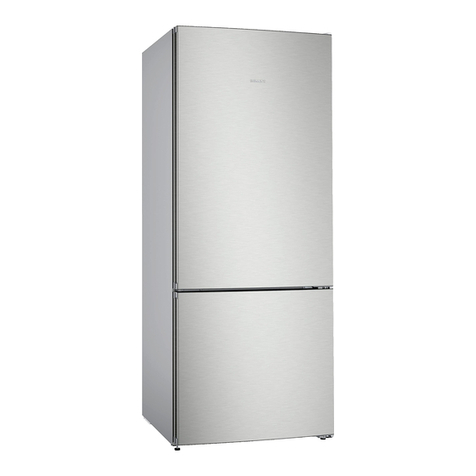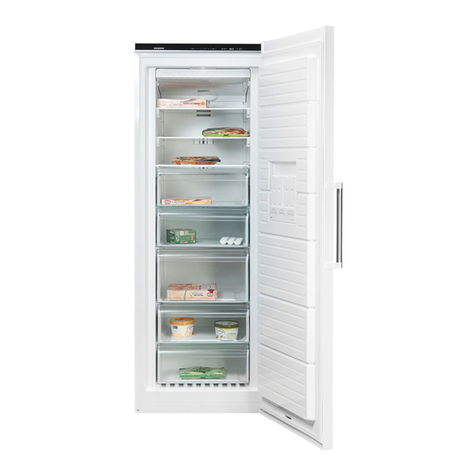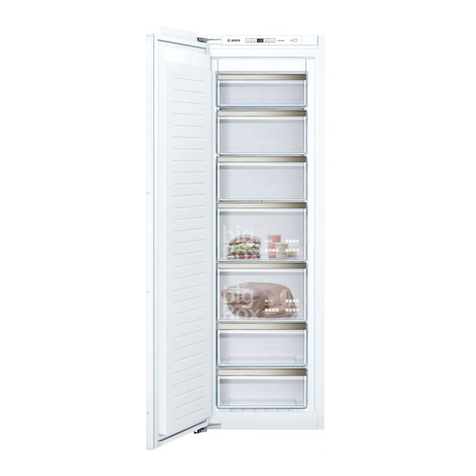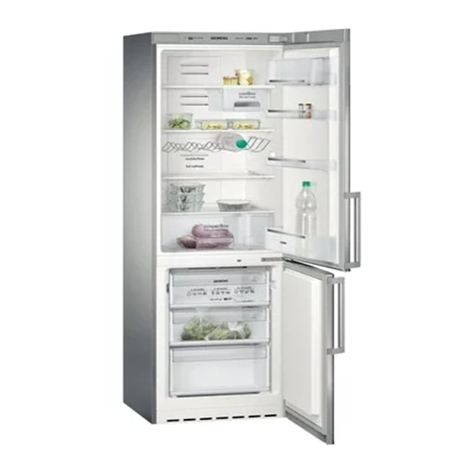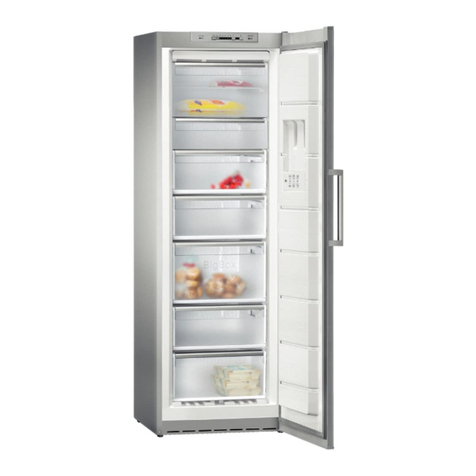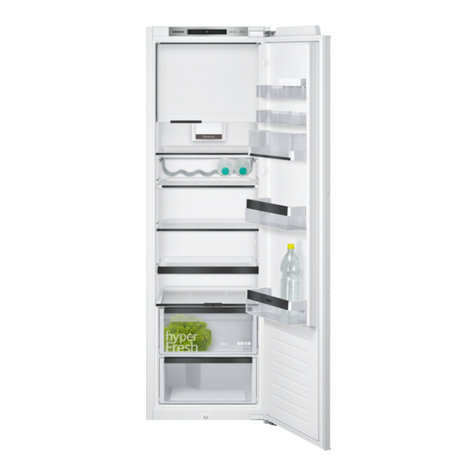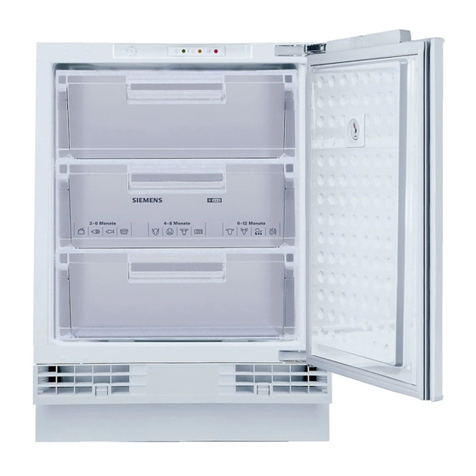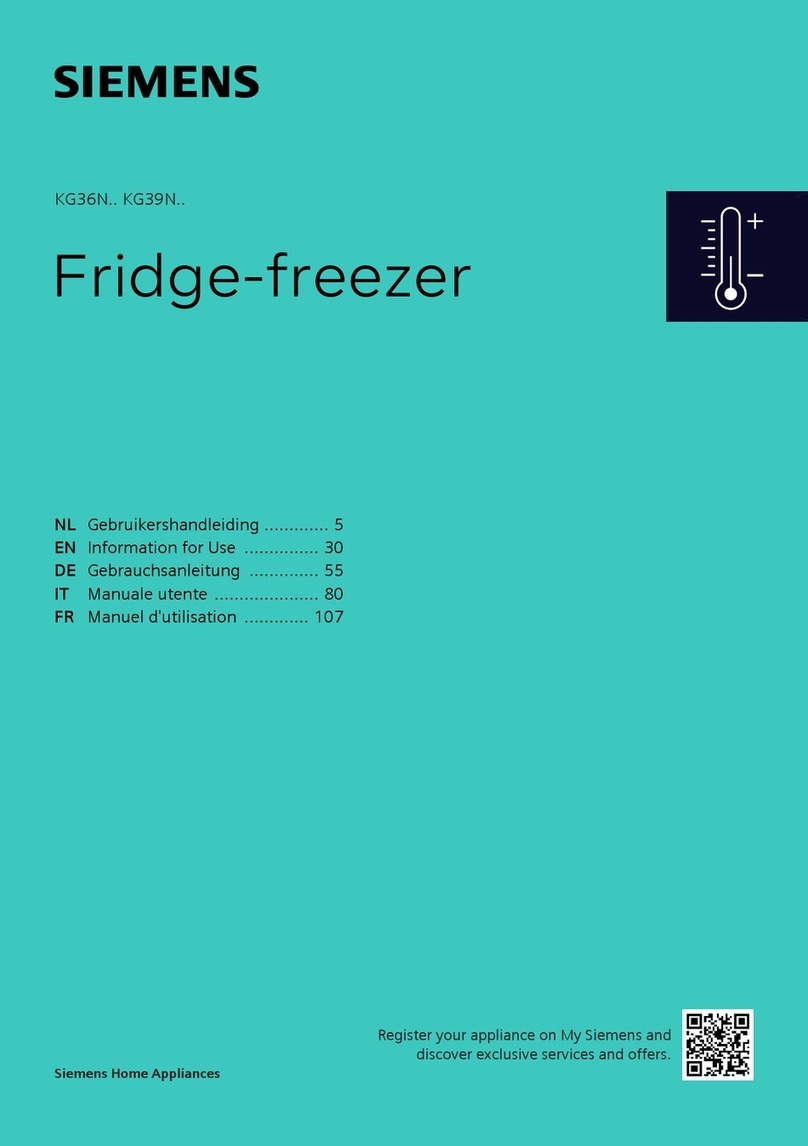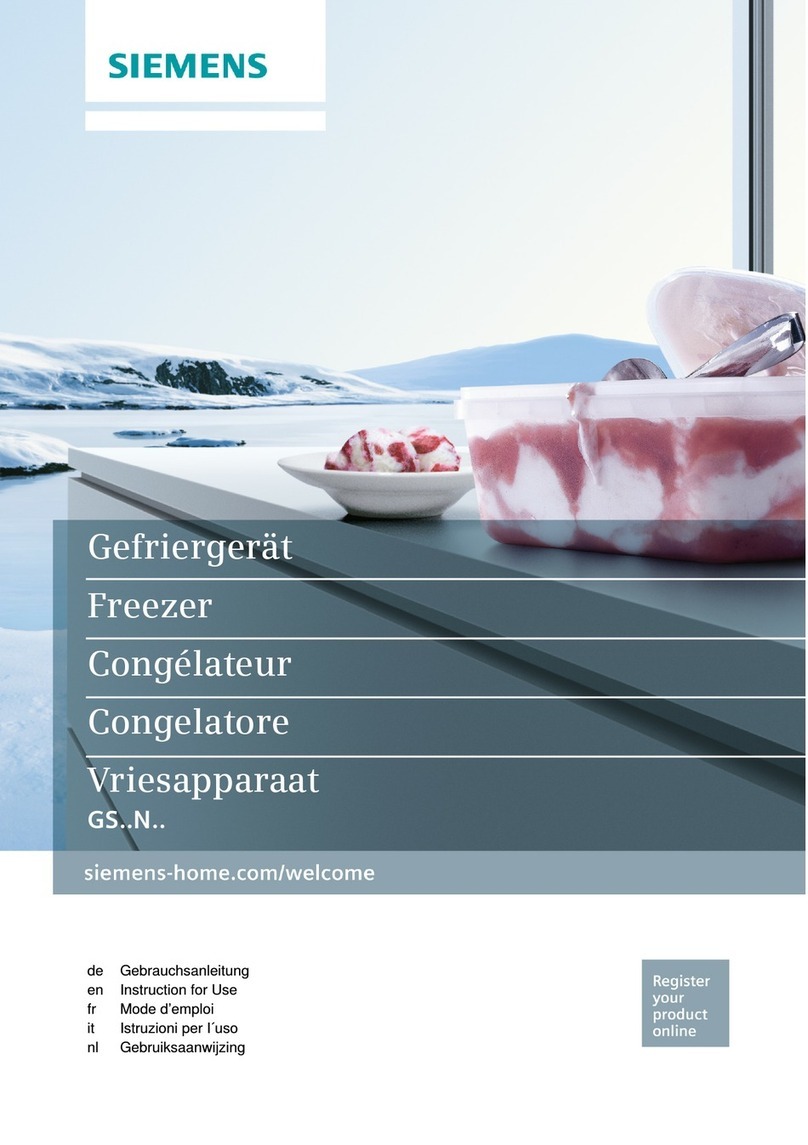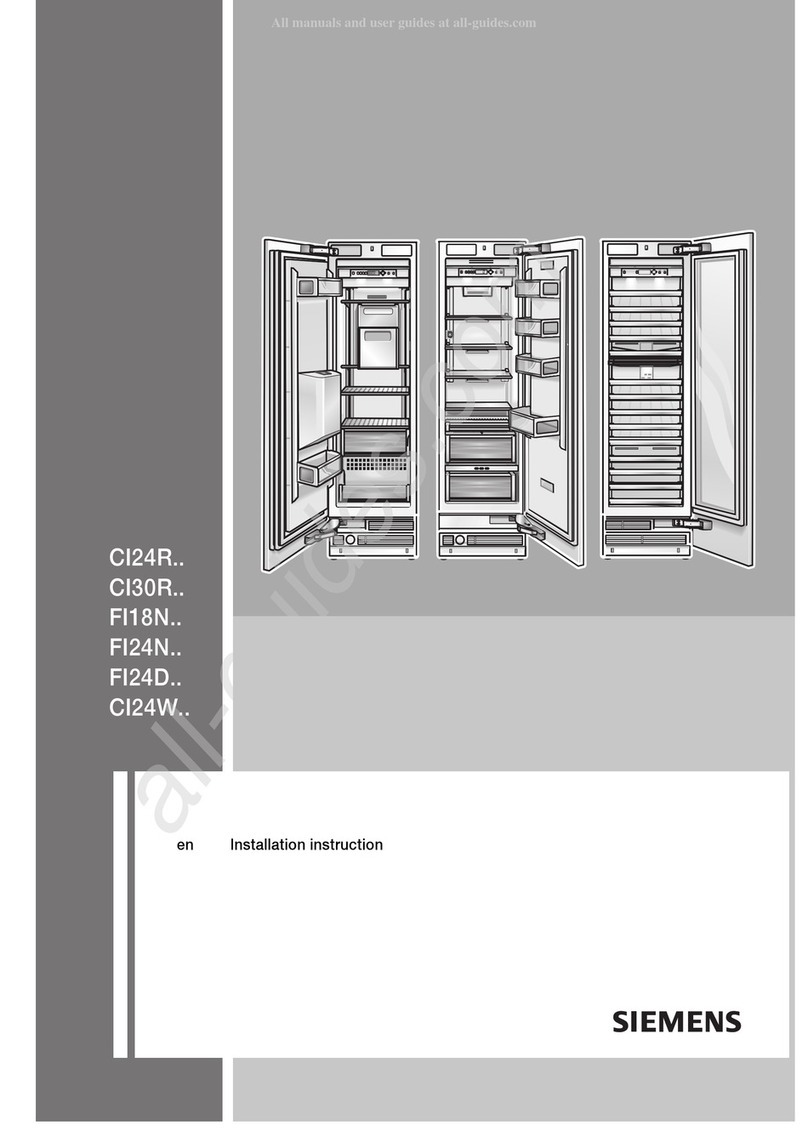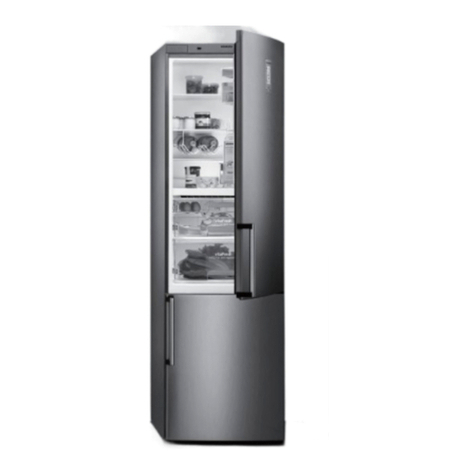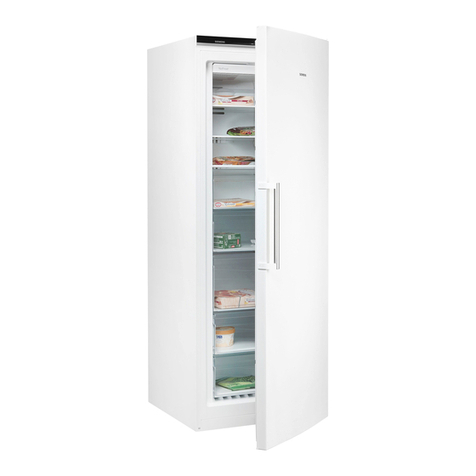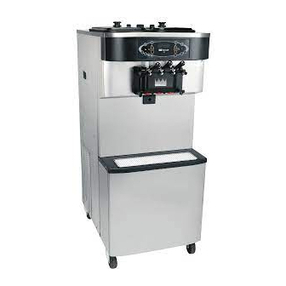
NL
m Warning The right place
With discarded appliances
1. Pull out the mains plug. Any dry, well-ventilated room is suitable.
Do not place the appliance in the sun or
next to a stove,
heating radiator or other heat source. If
installation next to a heat source is
unavoidable, use an insulating plate or
observe the following minimum distances
from the heat source:
2. Cut the connection cable and remove it
together with the plug.
3. Do not remove shelves and storage
compartments to make it difficult for
children to climb in!
4. Do not allow children to play with the
discarded appliance. Choking hazard!
Refrigerators contain refrigerant and gas
in the insulation. Which must be
disposed of carefully. In order to ensure
efficient and environmentally friendly
disposal, the pipes of the cooling circuit
must not be damaged until transport.
■ Next to electric or gas stoves 3 cm.
■ In addition to a central heating system 30 cm.
The floor at the installation site may not
give way, floor possibly
strengthen. Any imperfections
in the floor by putting something
underneath.
Size of
the delivery
Distance to the wall
Fig. #
The device does not require a wall
clearance to the side. The drawers and
shelves can nevertheless be fully
extended.
After unpacking, check all parts
for any
transport damage.
For complaints, please contact the store
where you purchased the device or our
customer service. Switch door stop
(If necessary)
The delivery consists of the following
parts: If necessary: We recommend you
have the door suspension replaced by the
after-sales service. You can request the
costs for changing the door stop from the
service department in your region.
■ Freestanding device
■ Equipment (model dependent)
■ Bag with mounting material
■ Instructions
■ Assembly instructions
■ Customer Service Booklet
■ Warranty Supplement
■ Information about energy consumption and
sounds
83
